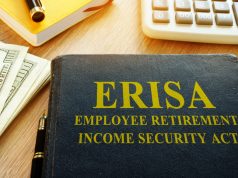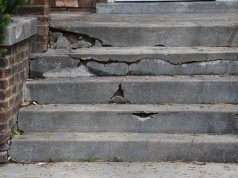
Personal injury law varies dramatically from state to state, and New York stands out for its complex, plaintiff-friendly, and often high-stakes legal framework. From its no-fault insurance rules to its scaffold law protections for construction workers, New York’s laws significantly shape how personal injury claims are filed, litigated, and settled.
Below is a closer look at the key legal features that define New York personal injury cases—and how they impact both injury victims and legal professionals.
1. Pure Comparative Negligence: Recovery Even If Mostly at Fault
New York applies the pure comparative negligence rule, which allows injured parties to recover compensation even if they are 99% responsible for their own injuries. This stands in contrast to the modified systems used by most other states, which cut off recovery at 50% or 51% fault.
This rule, found in NY CPLR §1411, affects case strategy and settlement dynamics, as defendants can’t avoid liability by shifting the bulk of the blame to the plaintiff.
2. No-Fault Auto Insurance: First-Party Coverage Rules the Day
Under New York’s no-fault insurance law, injured drivers must file claims with their own insurance company under Personal Injury Protection (PIP) coverage, regardless of who was at fault. Only if a “serious injury” has occurred can a victim step outside the no-fault system and sue the other driver.
Examples of serious injury include broken bones, permanent loss of use of a body organ, or significant disfigurement. These definitions are detailed in NY Insurance Law §5102(d).
For a helpful breakdown of no-fault benefits and thresholds, the New York Department of Financial Services offers a plain-language guide.
3. Labor Law §240: The Scaffold Law That Shifts Liability
New York’s Scaffold Law is perhaps the most plaintiff-friendly law in the country for injured construction workers. It imposes strict liability on property owners and contractors for elevation-related injuries (like falls from scaffolding or ladders).
If safety equipment fails or isn’t provided, the responsible party can be held fully liable—regardless of the worker’s own negligence. While labor unions defend the law, opponents argue it leads to inflated construction costs and insurance premiums.
Learn more from the New York Committee for Occupational Safety and Health (NYCOSH).
4. Tight Deadlines for Government Liability Cases
If your injury involves a government agency—such as a city bus accident or a sidewalk slip and fall—you must file a Notice of Claim within 90 days and your lawsuit within 1 year and 90 days.
These cases fall under New York General Municipal Law. Missing these deadlines will likely bar your claim entirely. The NYC Comptroller’s Office provides forms and guidance for filing a notice against city agencies.
5. No Damage Caps—But Structured Judgments Limit Payout Flexibility
Unlike many states, New York places no statutory cap on pain and suffering, economic loss, or medical malpractice damages. This allows injured parties to seek full compensation for serious injuries.
However, if a verdict exceeds $250,000, the state may impose a structured judgment, meaning compensation is paid out in scheduled installments instead of a lump sum. This system aims to ensure long-term financial stability but can reduce a plaintiff’s flexibility and immediate access to funds.
6. Collateral Source Rule Exceptions: Less Than You Think
Most states prevent damage awards from being reduced by insurance or other third-party payments. However, under New York’s collateral source rule, awards can be offset by things like health insurance, disability benefits, or workers’ comp—if the payments were made without expectation of reimbursement.
This rule often catches plaintiffs by surprise. It also complicates how attorneys calculate potential net recovery during negotiations.
7. Limited Damages in Wrongful Death Claims
New York’s wrongful death statute is restrictive compared to many other states. Family members cannot claim emotional damages such as grief or loss of companionship. Instead, recoverable damages are limited to:
- Loss of financial support
- Medical and funeral expenses
- Value of services the deceased would have provided
- Loss of parental guidance
Groups like the New York State Trial Lawyers Association have pushed for legislative reform to expand compensation for grieving families.
8. Sidewalk Liability Laws in NYC: The Property Owner Pays
In New York City, commercial property owners—not the city—are typically liable for injuries caused by defective sidewalks in front of their buildings. This is laid out in NYC Administrative Code §7-210, which shifts the responsibility (and legal risk) from the municipality to the adjacent owner.
This local code has significantly reshaped trip-and-fall litigation in the five boroughs and places a higher burden on small businesses and landlords.
Final Thoughts
New York’s personal injury laws are an intricate blend of progressive protections, aggressive litigation potential, and procedural pitfalls. From the generosity of pure comparative fault rules to the limitations of wrongful death damages, the legal landscape is both opportunity-rich and deeply nuanced.
For injury victims, these laws can either open the door to full compensation—or quietly close it, depending on how deadlines and legal thresholds are handled. That’s why having a knowledgeable attorney with deep familiarity with state and local nuances is crucial in maximizing outcomes.
Navigating a personal injury claim in New York? Your first move should be understanding the rules of the legal terrain—and your second should be finding counsel, such as Palermo Law, who knows how to navigate it with skill and strategy.






